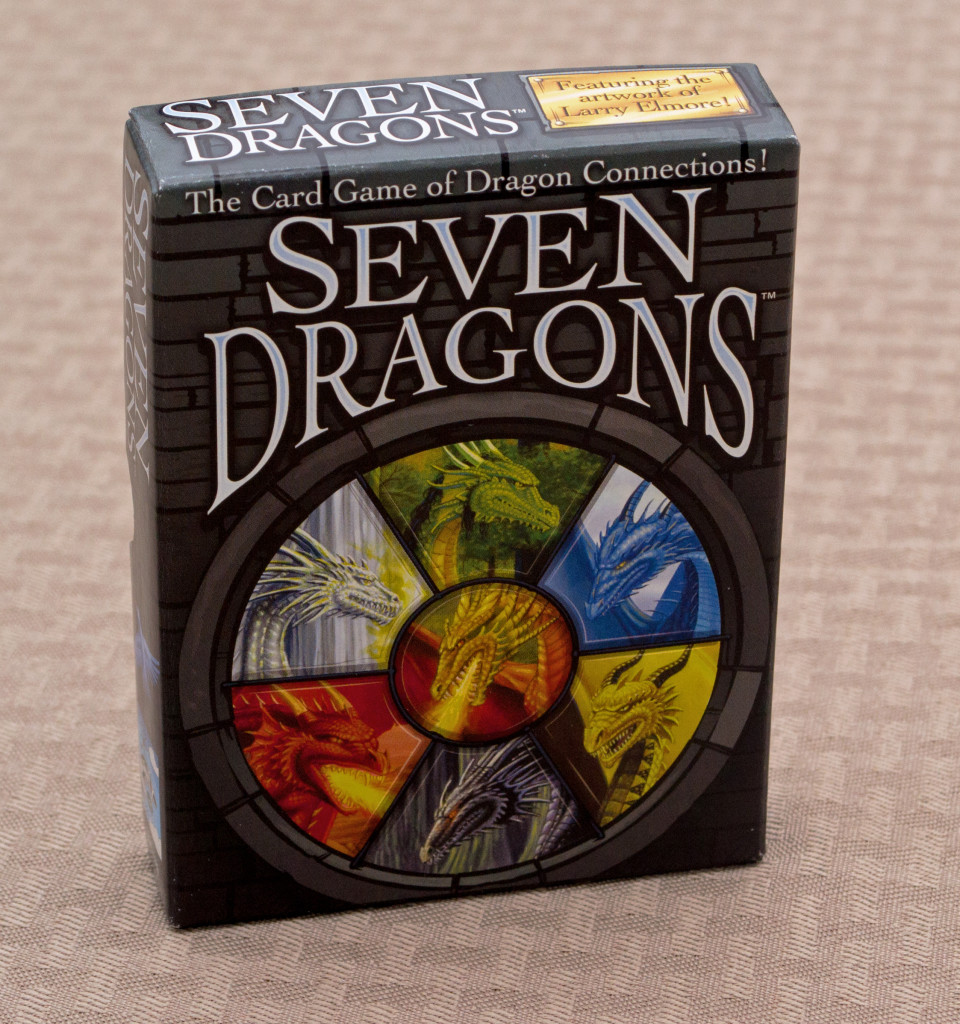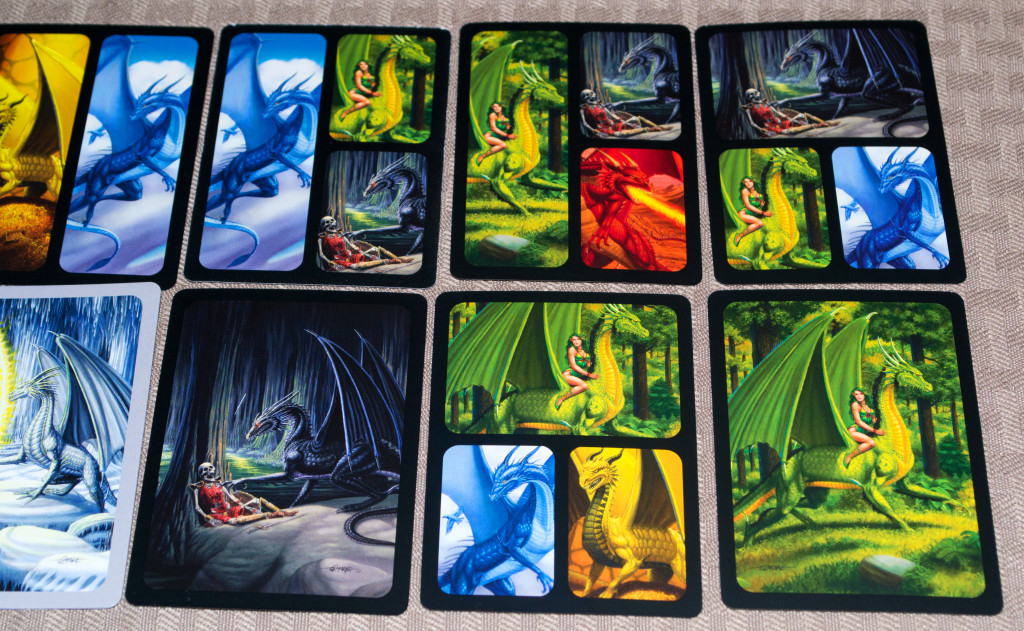Red dragons, blue dragons, gold dragons, green dragons…I’m not sure about you, but I’m thinking about relocating to some place a bit less hazardous. I mean, these insurance premiums are killer, especially the surcharge for “fiery death coverage”. Never mind the fact that I’ve um…”remodeled” my house three times this year…*sigh*. As the name implies, “Seven Dragons” features these mythical creatures in spades, tasking players with creating a set of a particular color in order to win the game. So grab yourself a fire extinguisher and join me in reviewing this game, won’t you?
Components
The game includes 72 Cards (5 Goals, 1 Silver Dragon, and a deck containing 51 Dragon Cards & 15 Action Cards).
Setup & Gameplay
The goal cards are shuffled with one being dealt to each player, face-down. The Silver Dragon is placed in the center of the table and will never be moved. The main deck is shuffled and each player receives three cards to form their starting hand. The object of the game is to create a connected chain of seven dragons of the same color as the one shown on your current goal card. The oldest player goes first.
A player will do the following on their turn:
1) Draw a card from the deck and add it to their hand.
2) Play a card from their hand.
A) If the card is a dragon, it must be added to the arrangement currently on the table. It must be placed so at least one panel is positioned alongside another panel of the same dragon/color. Cards can’t be placed so that they are perpendicular, skewed, or misaligned. If a player plays a 2, 3, or 4 panel dragon card and causes more than one panel to align, they get to draw a bonus card (one for each extra connection, though the colors MUST be different).
B) If the card is an action card, a player may perform the action and place it onto the discard pile. A player may place the action card at the bottom of the discard pile instead (or not take the action altogether) if they so choose. The Silver dragon adopts the color of the card on top of the discard pile (which is why some players may opt to place their action card on the bottom of the pile after playing it).
Players will continue taking turns until someone fulfills the objective, in which case they win the game!
Editor’s Note: The above doesn’t cover all of the rules found in the manual, but should give you an idea as to how the game is played. For more information, you can check out the rulebook here:
http://sf.looneylabs.com/literature/SevenDragons-Rules.pdf
The Review
I’m going to opt to keep this review short and sweet because of how easy it is to play. It’s a decent filler game that thankfully supports up to five players (those with households of five or more know what I’m talking about). The artwork is “OK” but could have been a bit better. You’ll need a fair amount of room to build the “blob” of cards that’ll be growing throughout the game, so be sure to use a dining room table or something similar. The action cards, while they keep things interesting, don’t do anything revolutionary.
All of the above reveals the game for what it really is: a light card game that gamers of any age can play. If you want something a bit more in-depth, go check out the likes of “Splendor“. If your family is a casual bunch who enjoys playing card games that are light in the strategy department, or if you’re a more serious gamer looking for a filler game to add to game night, then “Seven Dragons” may be what you’re looking for.
Final Verdict: 6/10
—


